Key Takeaways:
- GPS enables getting real-time locations and activities of moving assets.
- Companies can opt for active or passive GPS trackers.
- Surveys show that fleet tracking has a positive return on investment.
- Safer drivers and better-used vehicles are some of the benefits of GPS fleet tracking.
GPS has seamlessly integrated into our daily lives, especially when it comes to navigation.
However, did you know this isn’t where this technology truly shines?
No, fleet tracking is where GPS reveals its magic.
So keep reading as we explore the basics of GPS fleet tracking, highlight its key advantages, and delve into its applications within the construction industry.
By the end of this read, you’ll have a fresh perspective on GPS technology and how it can revolutionize the productivity and profitability of your very own company.
In this article...
GPS Fleet Tracking Explained
GPS fleet tracking is a process that combines software (such as fleet management solutions) with hardware (GPS trackers) to collect precise, real-time information on asset location and activity.
The goal?
To get more control over your fleet, make more informed decisions backed by accurate, up-to-date data, and in turn, increase efficiency and profitability.
And, according to Verizon Connect’s 2024 survey on fleet technology trends, GPS monitoring seems to be quite an effective tool for reaching these goals.
The survey shows that 70% of fleet operators consider GPS tracking very valuable in their day-to-day lives.
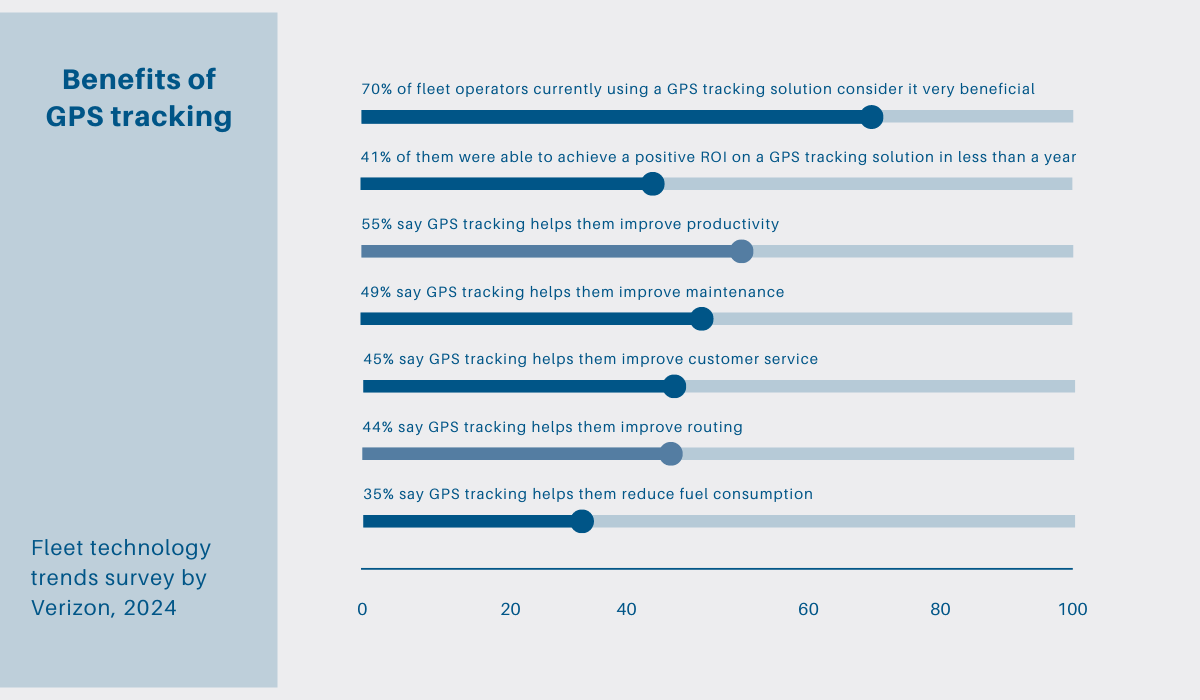
More specifically, they cite improvements across many different aspects of fleet management, including productivity, maintenance, customer service, routing, and fuel consumption.
In fact, 41% report achieving positive ROI on GPS solutions within a year.
Okay, but how exactly does this technology work?
Well, the first step is to attach GPS trackers to your vehicles and activate them, after which the system pretty much takes over.
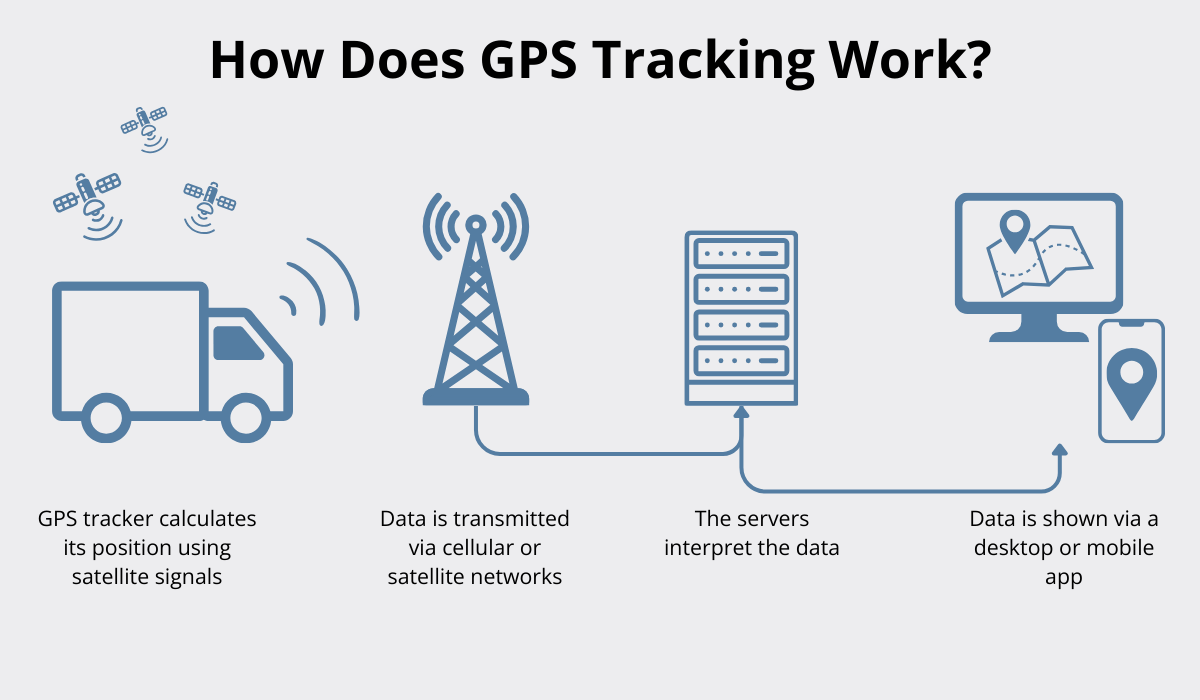
These tracking devices connect to a group of satellites (at least three) from the Global Navigation Satellite System (GNSS) to determine their latitude and longitude coordinates.
At the same time, as they transmit this data in real time, wireless carriers intercept it and relay it to a server for interpretation.
Finally, you, as a fleet management software user, can access this information effortlessly via phone or computer to observe your assets’ movements on a digital map.
Simple, seamless, and super effective.
Types of GPS Trackers
There are two basic types of GPS trackers: passive and active.
The biggest difference between the two?
The way they relay vehicle location data.
Passive GPS monitoring doesn’t offer real-time information.
Instead, it records locations at predetermined intervals and requires manual retrieval of stored data by connecting the tracking device to a computer.
Essentially, a passive GPS tracker serves as a receiver rather than a transmitter.
Now, these passive systems definitely have their perks.
They are typically the more cost-effective option and the easiest to install, implement, and use.
Plus, since they don’t continually transmit data, they usually consume less power, resulting in much longer battery life.
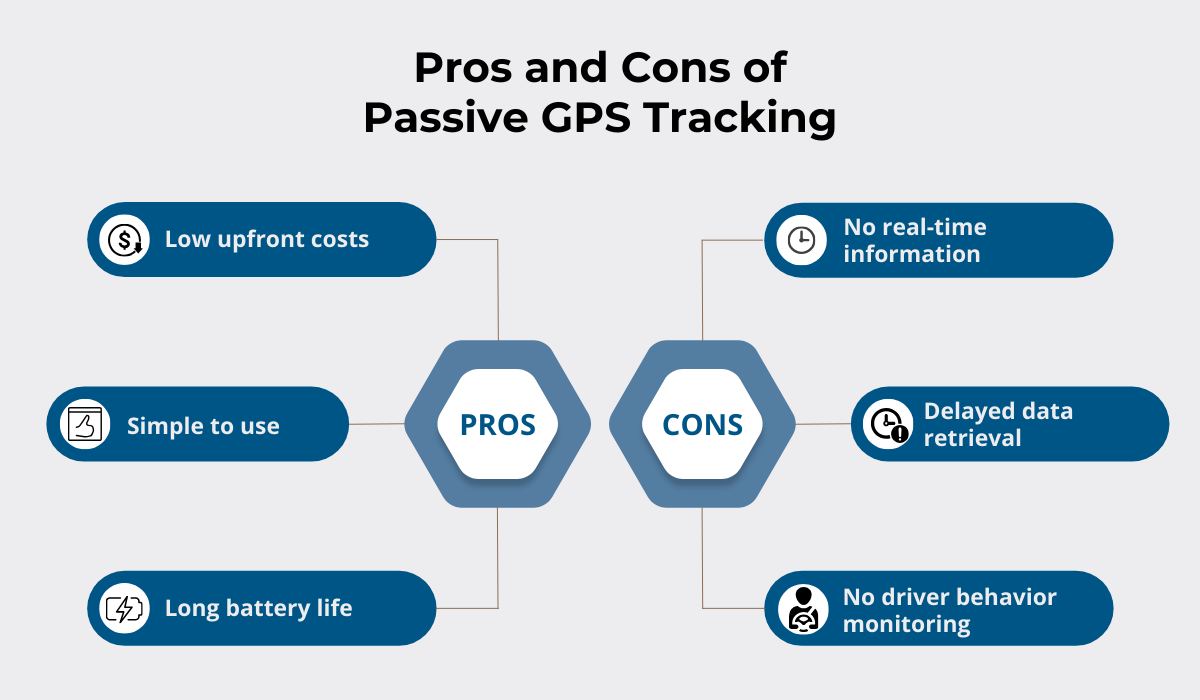
Nevertheless, the lack of timely information can be quite a problem for fleet managers, particularly in situations where every second counts, such as road accidents or stolen asset recovery.
Active GPS monitoring, on the other hand, does provide real-time data, offering immediate access to this information via phone or computer.
Often, it can also issue trigger-based alerts, such as when drivers deviate from designated routes or a vehicle exits its assigned area at a job site, even further boosting overall fleet security.
And while these systems tend to be somewhat pricier due to ongoing subscription fees for data transmission and access to real-time tracking platforms, the data they yield is much more accurate, precise, and, most importantly, up-to-date.
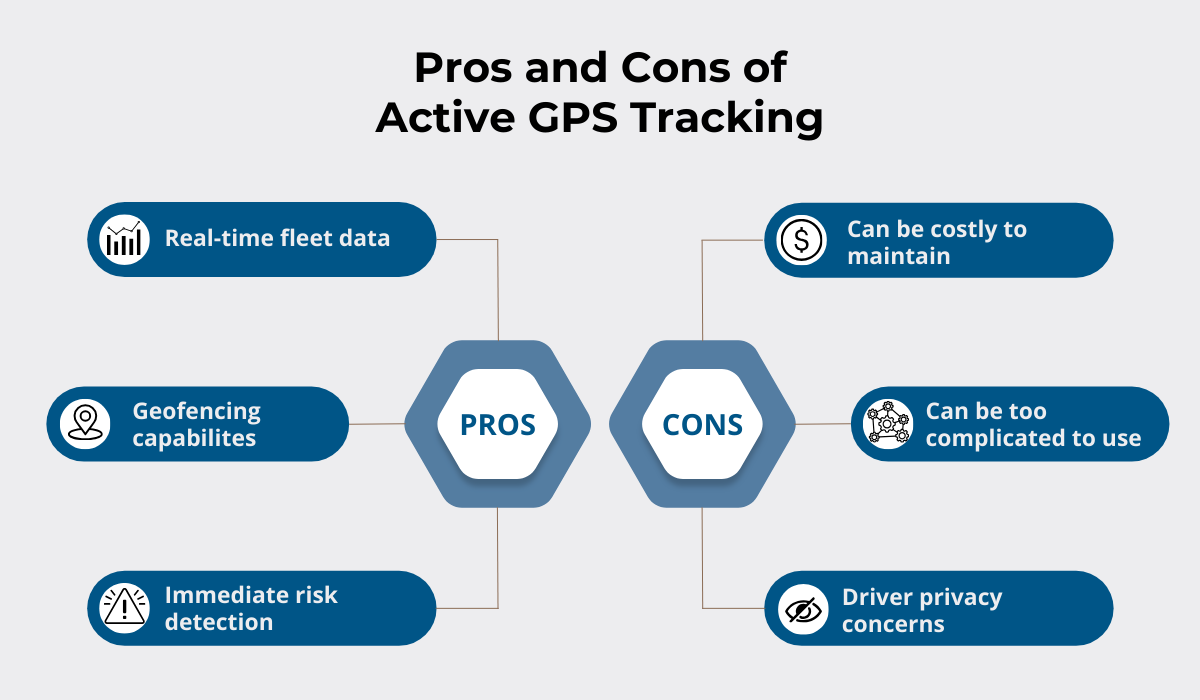
This is exactly what makes them more suitable for fleet management tasks like equipment allocation, fuel efficiency control, or route optimization.
Not to mention, they are much more effective in stolen asset retrieval than many other solutions out there.
Why You Should Invest In GPS for Fleet Tracking
Now, you’ve probably stumbled upon countless articles singing the praises of GPS fleet tracking.
But is it really worth the hype?
Well, maybe.
In the upcoming sections, we’re diving deep into the significant benefits of this technology, providing you with examples, research-backed data, and actionable insights from industry experts.
And if you find that your fleet could also use some of these perks, then perhaps this is your sign to take the plunge and get yourself a GPS tracking system.
Fosters Employee Accountability
GPS tracking gives you complete visibility of vehicle and driver performance, behavior, and movement, which automatically raises employee accountability across entire teams.
How exactly does it achieve this, you ask?
In a couple of different ways, actually.
Let’s take a look at just a few examples:
- Real-time location monitoring makes sure drivers adhere to designated routes and schedules.
- Speed tracking via GPS systems promotes safer driving practices by encouraging drivers to be mindful of their speed, thereby reducing the risk of accidents.
- Monitoring and identifying instances of unnecessary idling helps minimize fuel wastage.
- Tracking driving hours ensures drivers take regular breaks and comply with the designated operating hours, in turn ensuring Hours of Service (HOS) compliance.
Essentially, fleet operations transparency and team accountability directly translate to a much safer, more efficient, cost-effective, and compliant fleet.
You simply can’t manage your assets successfully without those two elements.
An interesting example illustrating how GPS monitoring fosters accountability and encourages drivers to take ownership of their work comes from a contractor from Georgia, as reported by For Construction Pros.
This contractor decided to equip a large number of assets with a telematics system in order to monitor (and correct) driver behavior.
According to the business process manager for the contractor, they were able to achieve just that.
They established a driver scoring system, tracked their performance, and soon, they were able to identify underperformers and provide tailored coaching to address their specific needs:
“We may not have ever known about this driver’s habits without [the telematics system]. [We] sat him down and talked about the responsibility associated with driving. We let him know we would be watching for an improvement and gave him tips to think about based on the habits [the data] revealed […] After that, his score steadily improved.”
But the most interesting part isn’t the fact that these drivers showed significant improvement in their driving habits.
No, what’s so interesting about this story is that even those not directly monitored started to up their game, too, showcasing the ripple effect of accountability, the BPM explains:
“We had not spoken with the dump truck drivers that haul mix and aggregate, but their scores improved as a whole. Every single one of them improved over time.”
And at the heart of it all lies transparency.
When every move is visible, accountability becomes second nature.
And that’s where GPS tracking steps in, highlighting successes, revealing areas for improvement, and steering everyone toward a more responsible, efficient, and safe work environment.
Reduces Operational Costs
Looking at the big picture, GPS tracking systems undoubtedly pay for themselves by effectively reducing a diverse range of fleet-related expenses.
Think about it: GPS monitoring helps you improve your maintenance strategies, streamline resource allocation, optimize vehicle usage, and bolster overall operational efficiency.
It’s only natural that these improvements eventually translate into tangible cost reductions across various aspects of fleet management, including:
- Maintenance expenses
- Replacement costs
- Rental fees
- Fuel consumption
- Insurance premiums
- Theft-related losses
Obviously, this is great news for fleet managers, who are always on a mission to cut operational costs anyway.
In fact, according to a Teletrac Navman survey, the two biggest challenges for fleet operators seem to be fuel prices and escalating inflation, which even further highlights fleet management’s urgent need for effective cost-saving strategies.

And guess what the top three expense areas for them are.
Fuel, maintenance, and new equipment acquisition—precisely the areas that GPS tracking can help improve.
For example, let’s zoom in on those fuel costs for a moment.
With GPS monitoring, you get insight into drivers’ routes, idle time, and vehicle utilization, which enables you to understand the patterns and reasons behind your fuel expenses much better.
This, in turn, allows you to spot and rectify inefficiencies in fuel consumption long before they start wreaking havoc on your budget.
Larry Herman Jr, Telematics Support Manager at RDO Equipment Co., agrees, explaining that inefficient vehicle utilization has a lot to do with overall fuel consumption and associated costs.
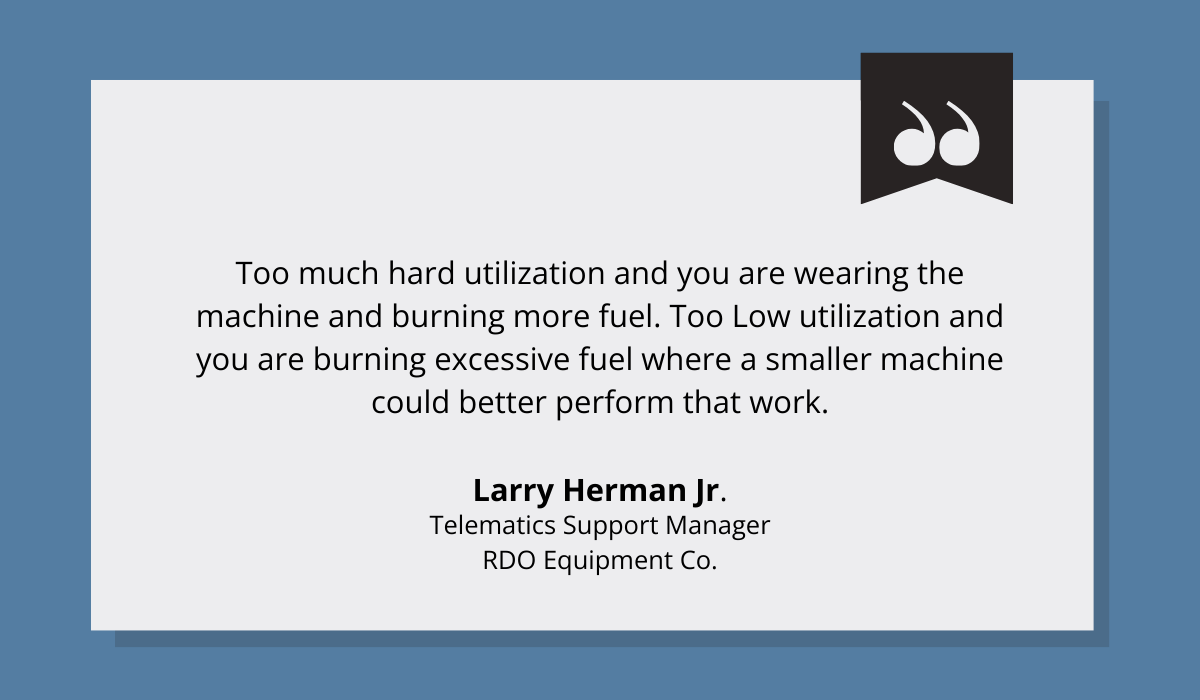
At the end of the day, your fleet needs to be a profitable asset, not a drain on resources.
With GPS tracking, attaining this goal becomes significantly easier, as this technology provides you with invaluable and actionable insights essential for identifying cost-saving opportunities and optimizing asset allocation.
Improves Safety
GPS tracking takes driver safety management to a whole new level.
By monitoring your team’s movement in real-time, you can ensure they stick to the safest routes, promote defensive and safe driving practices, and even provide drivers’ precise location to emergency responders in unfortunate cases of accidents.
Most importantly, GPS monitoring reveals driving trends and patterns, helping you identify problematic behaviors like speeding, harsh braking, or other similar risky habits.
Matt Camden, Group Leader for the Research to Practice & Outreach group in the Division of Freight, Transit, & Heavy Vehicle Safety, explains this is extremely valuable for coming up with effective training strategies, tailored to each driver individually.

After all, if you want to prevent accidents from happening in the first place, tailored coaching is the way to go.
Obviously, the importance of GPS tracking in the context of fleet safety cannot be overstated.
Let’s face it: protecting driver well-being is one of the top priorities for any fleet manager out there, but it’s also a huge challenge.
According to a Wakefield and Motive report, around 72% of fleet operators spend over 10% of their budget on improving or managing safety.
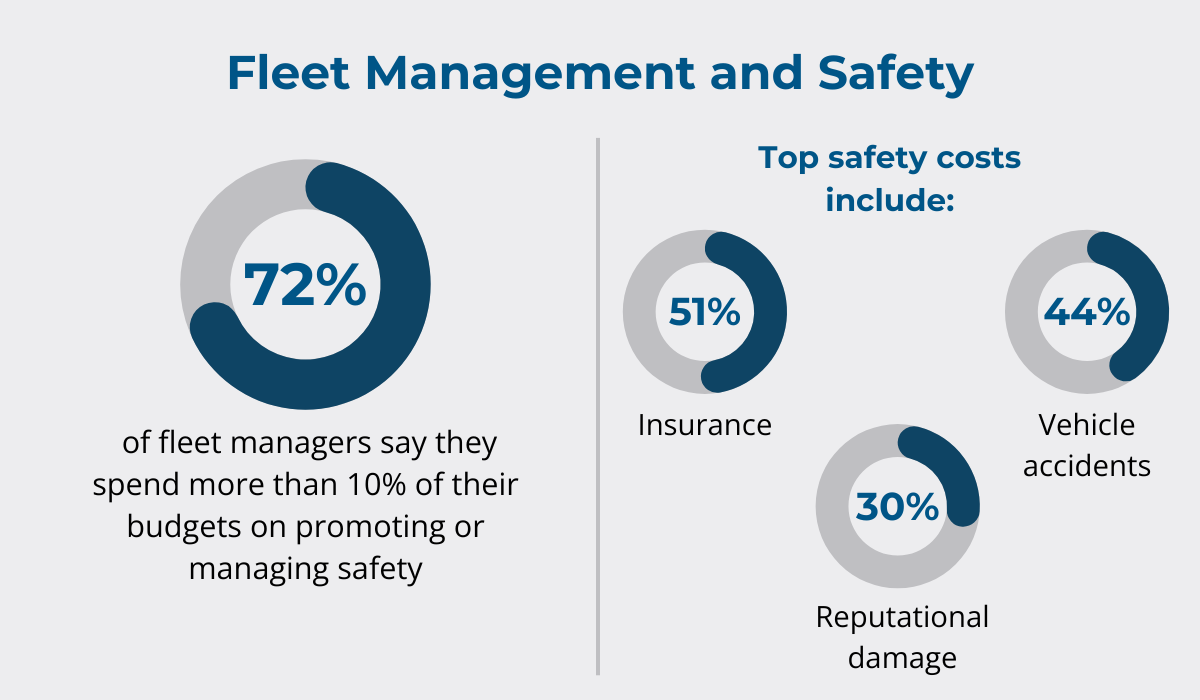
The safety costs that constitute that 10% include insurance premiums, as well as expenses related to accidents, downtime, and even reputational damage.
Luckily, GPS monitoring seems to be truly successful in ensuring drivers arrive at their destinations safe and sound.
A survey conducted by GPS Insight reveals that 74% of fleet professionals agree that GPS tracking really is effective when it comes to protecting their drivers and vehicles alike.
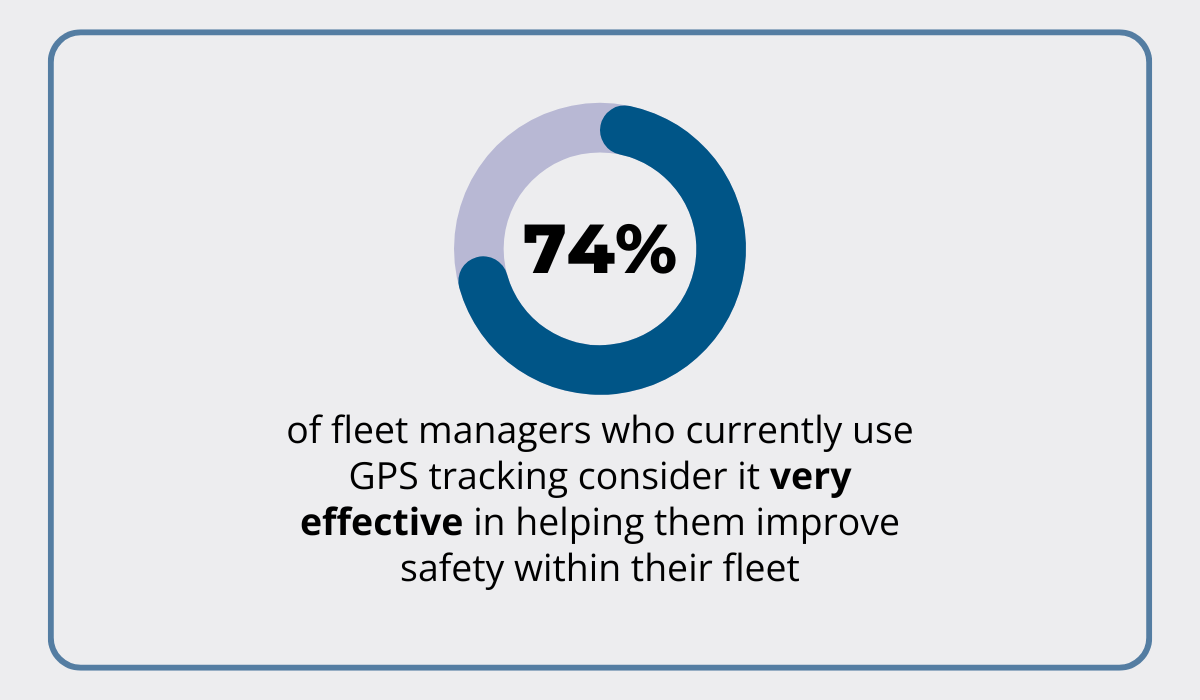
So, if you’re still wondering why you should invest in GPS fleet tracking, there’s your answer.
Not only does it foster a culture of responsibility among employees and lead to significant cost savings, but it can also boost safety, proactively put an end to road accidents, and ultimately, even save lives.
How Companies Use GPS for Fleet Tracking
There are two key areas of construction fleet management where GPS tracking really shines: resource allocation and theft prevention.
For starters, no matter how big or small your fleet is, GPS technology will always provide you with exact information about how many assets you have, where they are, who’s using them, and for what project.
This complete asset visibility, in turn, boosts your capability to ensure there’s just enough of each machine or vehicle for successful project completion, no matter what.
Russ Young, Chief Business Development Officer at Tenna, elaborates.
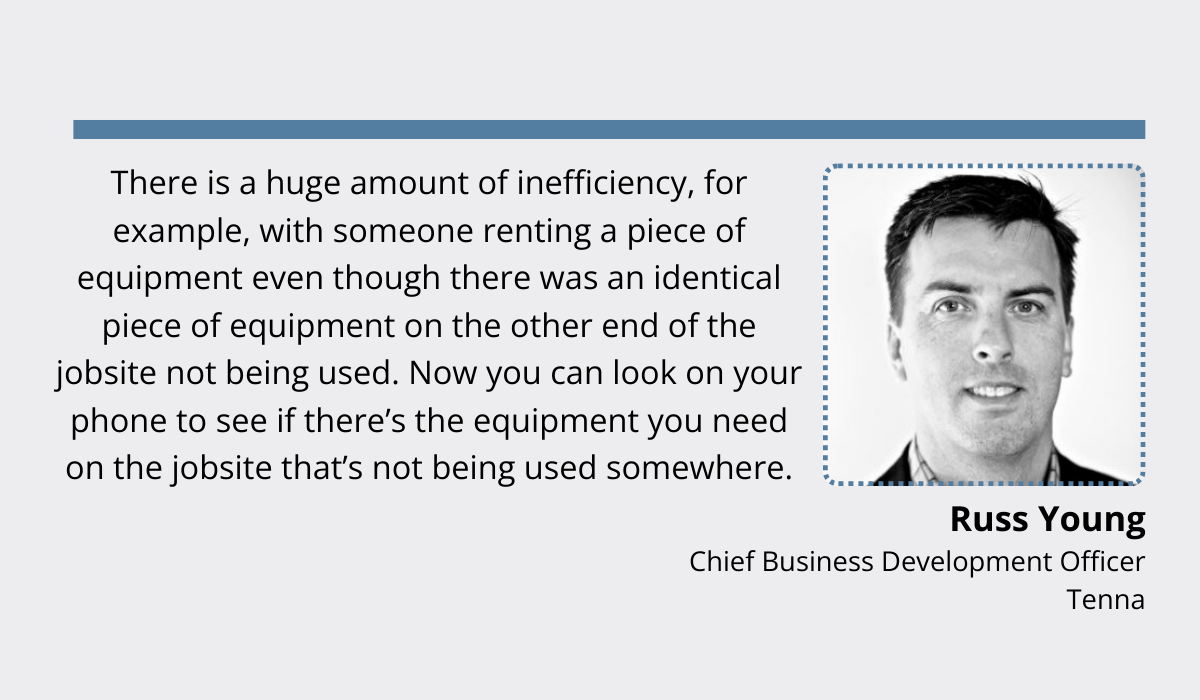
With a GPS monitoring system in place, there’s simply no room for excess vehicles or machinery that drain resources without contributing to project progress. It’s as simple as that.
Moreover, GPS proves highly effective in curbing theft—an alarmingly prevalent issue in the construction sector.
Did you know that about 70% of construction professionals report witnessing job site theft at least once a year?
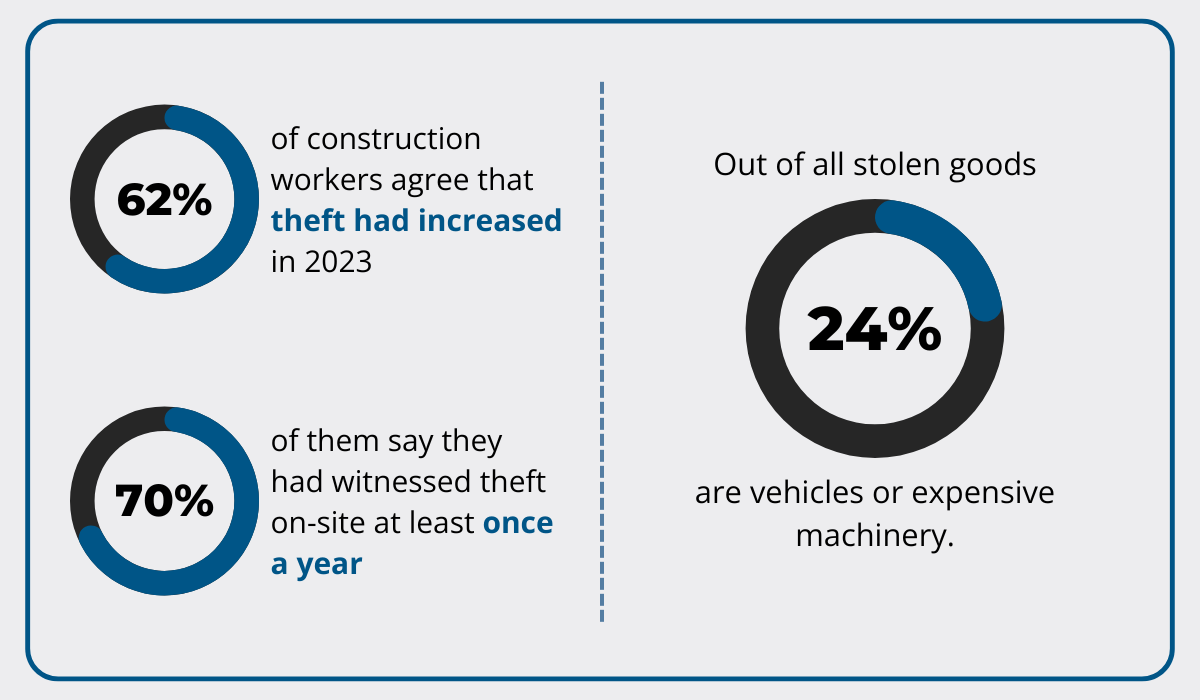
And let’s not forget that the problem also seems to be showing an upward trend.
Clearly, fleet managers need to step up their security game, and what better way to do so than with GPS tracking?
Just take a look at GPS trackers developed by GoCodes.
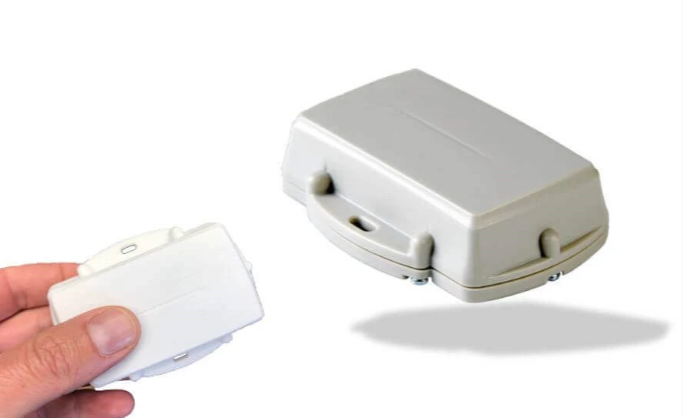
Not only do they provide up-to-the-minute vehicle location, speed, and acceleration data, even when your equipment is on the move, but they also integrate with our asset management software to establish virtual perimeters, known as geofences, around your job sites.

Once you set up geofences, the trackers vigilantly monitor your assets and, as soon as they leave their designated area, you get an immediate notification.
That way, even if somebody tries to take away your valuable assets, you’ll know about it right away.
Ultimately, there’s no denying that construction fleets can benefit greatly from GPS technology.
Anything from optimizing equipment availability and fuel consumption control to deterring theft and facilitating job site coordination—GPS truly does it all.
Conclusion
In today’s fast-paced, highly competitive world of construction, where every second, every drop of fuel, and every extra year you can add to your machines’ lifespans counts, GPS tracking can truly be a game-changer.
It offers a comprehensive view of your fleet, providing visibility into its operation, condition, and performance like never before.
No wonder this translates into significant cost savings, safety boosts, and overall improved efficiency.
So, what are you waiting for?
Go get yourself one of these amazing systems and watch your fleet thrive.


